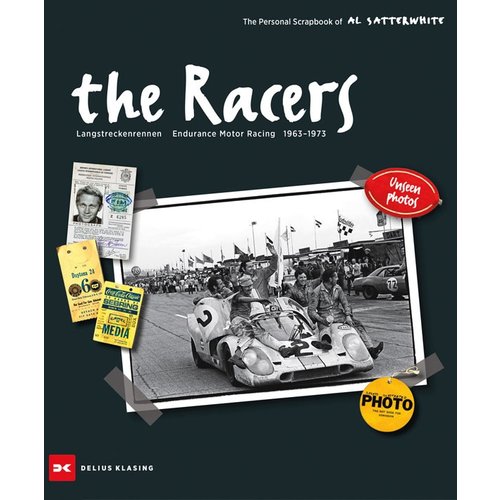
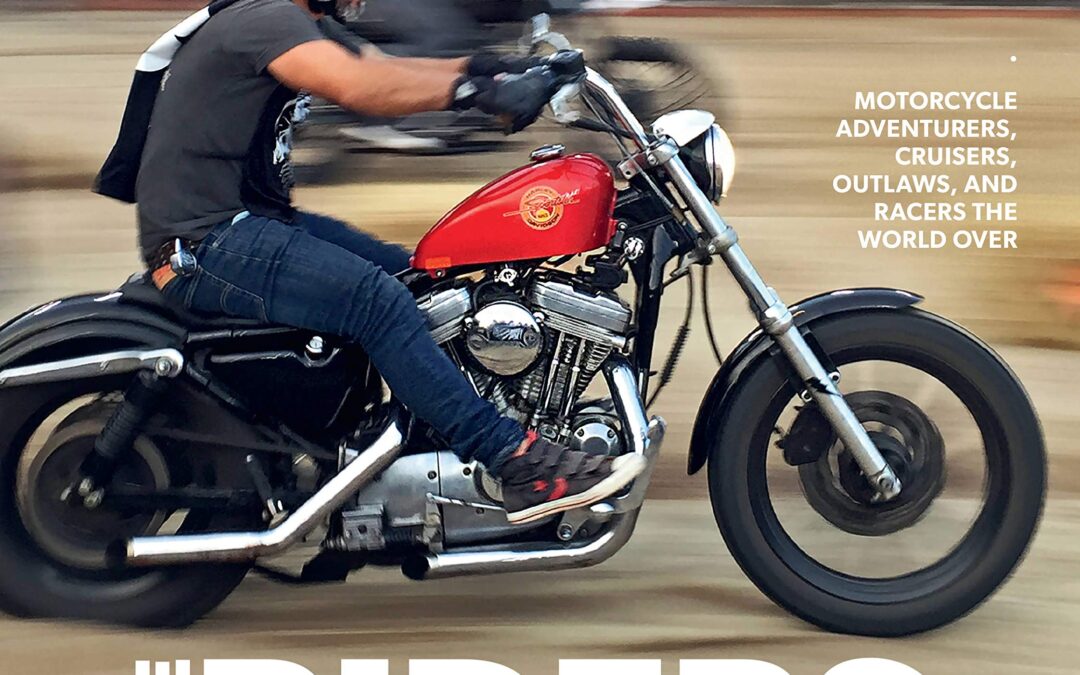
The Riders explores and celebrates the differences and common bonds among motorcyclists around the world via Henry von Wartenberg’s engaging and inviting documentary photography.
Motorcyclists feel a kinship with fellow riders that is not easily explained but runs deeper than choices like bike brand or riding focus. You see it sometimes with a wave of the hand from one lane to the next, with an appreciative nod at a stoplight, or in a U-turn to check on a rider stranded on the roadside.
Motorcyclists make a conscious decision to ride an inherently dangerous device, a machine open to the elements and vagaries of nature. A motorcycle demands a level of attention far greater than a car and consequences for inattention are much graver. On the flip side, riding a motorcycle offers an unmatched sense of freedom, adventure, and involvement.
Von Wartenberg, a long-time rider himself, has traveled the world on a variety of assignments, some motorcycle related and others not. But wherever he was on the planet, he always found a way to connect with fellow riders and document their culture and machines. Over the course of his travels he has photographed riders in more than 30 countries including Bolivia, Austria, Canada, Chile, China, Costa Rica, France, Mongolia, Mexico, Italy, Germany, Iceland, Peru, Spain, the United States, England, and Thailand to name a few.
What emerges on the pages of The Riders is the amazing breadth of the motorcycling world, from outlaw clubs to adventurers to racers to boulevard cruisers to those for whom a motorcycle is the only form of transportation as well a means to make a living.
The Riders is a book sure to be enjoyed by anyone who embraces the two-wheeled world.
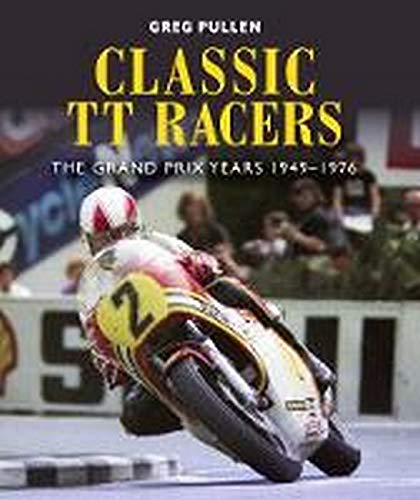
Classic TT Racers: The Grand Prix Years 1949-1976 is a history and tribute to some of the most important and successful motorcycles that raced during the TT’s years as host of the British round of the motorcycle world championship. Topics include the events and personalities that led to the creation of the race and its challenging course.
The early success of the British motorcycle manufacturers -Norton, Velocette, AJS and Matchless – and their riders are covered as are the origins of the Italian Fours – Gilera and MV Agusta Quattro. The influence and reign of the Japanese manufacturers – Honda, Yamaha, Kawasaki and Suzuki – are discussed. Finally, details are included of the technical developments that enabled the bikes to conquer the mountain course with world-record beating times.
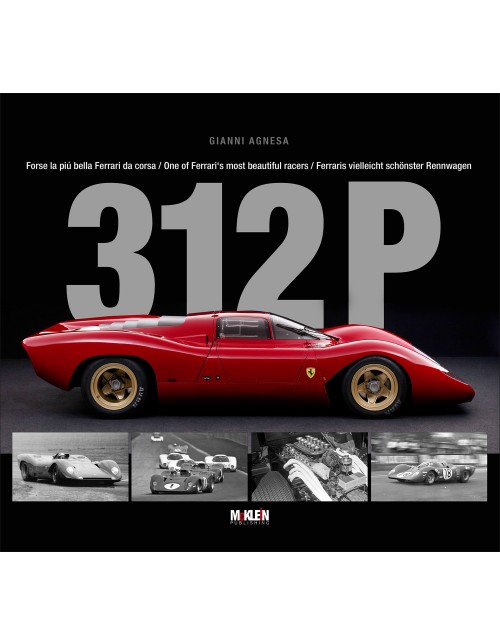
With racing cars being built mainly for performance, only a few of them combine this with admirable beauty. Ferrari’s model 312 P is definitely such an example–thanks to the work of its designers Giacomo Caliri and Edmondo Casoli, but also Enzo Ferrari, who tried to stop the team adding wings or other aerodynamic additions to its beauty–even if they might have improved the car’s performance.
The 312 P was built by the Maranello company for the 1969 World Sports Car Championship and powered by a stunning 3-litre V12 engine. A short development period and a small budget led to a season of mixed results where, except in Monza and at Le Mans, only one car was sent to the races to take on all the other teams. Its official career ended when the bigger 5-liter 512 S came for the 1970 season to fight the Porsche 917s.
This book by Gianni Agnesa tells the story of the car–of which only three examples have been built–in every detail, from the very first test, through every race they did with the factory team or later when the North American Racing Team took over the cars. It gives short portraits of the drivers of the 312 P, such as Chris Amon, Mario Andretti, Pedro Rodriguez, Peter Schetty, Mike Parkes, Tony Adamowicz, Chuck Parsons or Sam Posey. The 264-page volume takes us right up to today and the one example that is still used on some historic events. The large-format, high quality book produced by McKlein comes in a slipcase and is illustrated by many previously unseen images.
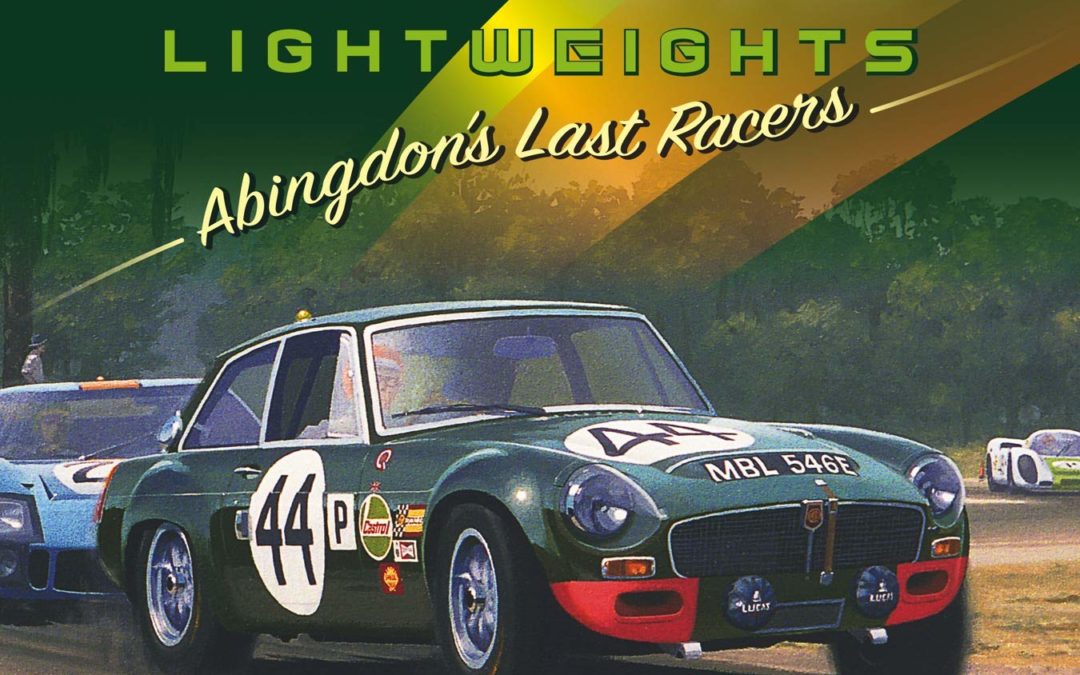
A fascinating insight into the production and career of the MGC GTS lightweights, this well-researched text is generously illustrated with rare photographs, race programs, and original artwork.
In early 1968 a works competition MGC GTS scored the MG Car Company’s best ever result at the Sebring 12-hour race, finishing in tenth position. Buoyed by this success a second car was built, with both entered on the Marathon de la Route but without success. Closure of MG Competitions Department at Abingdon was not far off, however the team gallantly prepared both cars for their final race in 1969. Under the banner of the American importer the newer car finished in fifteenth position.
The MGC GTS Lightweights covers the development of the production road car, its conception, compromised design and subsequent failure to attract loyal MG customers. This is followed by an in-depth technical analysis of the development, construction and build of the MGC GTS. Specific attention is given to the specialised components utilised, particular emphasis placed on the unique aluminium bodyshell that for the first time is laid bare. The competition history and race results are comprehensively covered, and lastly the subsequent fall from grace and rediscovery of these last and much loved MG competition cars to emerge from Abingdon.
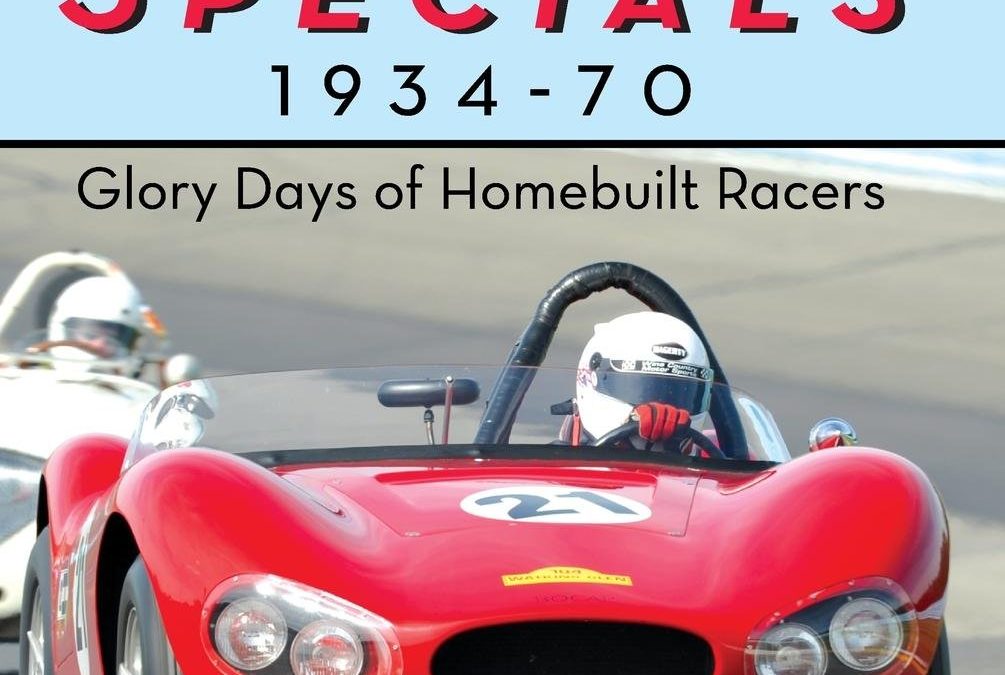
Once upon a time, there was a guy named Max Balchowsky who decided he wanted to beat Ferrari and Jaguar at their own game-road racing. The trouble was, he didn’t have the cash for a factory racer. So he built his own. Using a Ford homemade tube frame, a souped-up Buick V-8 and running on recapped whitewalls, Ol’ Yaller whipped them all.
Welcome to American Road Race Specials 1934-70. These were the glory days of road racing in the United States, from the first races between imported MGs to the world-winning Made-in-the-USA Scarabs and Chaparrals, and on toe the downfall of the Shadow.
This is the story of the men who built and ran their own homemade cars in pioneer SCCA and Cal Club races on town streets, airports and then the first purpose-built American racetracks. Here is Jim Hall, Lance Reventlow, Ken Miles, Carroll Shelby, Ak Miller, Balchowsky, Troutman and Barnes, Phil Hill, Dan Gurney, Roger Penske, George Follmer, and all the rest. . . .
And the cars: Ol’ Yaller, Cunningham, Scarab, Chaparral, Kurtis, Devin, Zerex Special, Bocar, Caballo de Hierro, Pooper, Shadow, Ferraris with Chevy V-8s and every other possible chassis-engine combination a racer could think of. Some were crude, others deceptively homespun; most were half hot rod, half sports car-all of them were unique and built with passion.
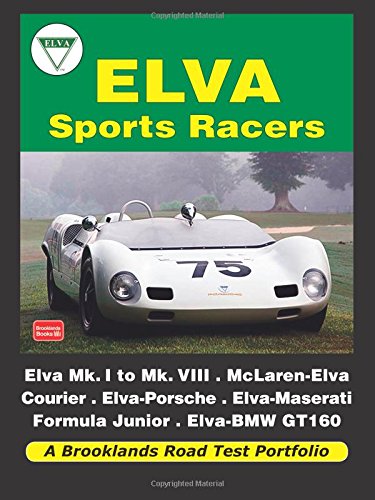
In common with several other specialist sports car marques, Elva (from the French phrase elle va – she goes) evolved from a one-off model built for an enthusiastic amateur racer. Successes on the track created a healthy demand but financial problems eventually caused its downfall. During its brief existence Elva produced some truly classic and exciting cars, the details of which can be seen in this historic international collection of road tests and feature articles.
20967

Plenty of books have been published about British bikes and their glorious motorcycling racing heritage, but until now none has solely focused on the rich variety of British café racers. a genre created in 1950s Britain by the ‘ton-up boys’.
Style, speed and passion combine for an eclectic journey into the world of the British cafe racer. Uli Cloesen’s latest book – the first dedicated to the British cafe racer scene – is a celebration of all things fast from Britain, a definitive overview of the cafed British motorcycle, from single-cylinder to four-cylinder variants, and going well beyond the parallel Triton twin.
Featuring a truly stunning variety of British motorcycle engine based cafe racers, from the UK and beyond, and complemented by owners’ stories and technical descriptions, this book presents the eye candy of the British cafe racer world … come and see the cafed side of Britain!

Powered by a tubocharged flat six, the 956/962 had Porsche’s first full monocoque structure and was the first car its engineers designed to produce aerodynamic downforce. Raced both by the factory and by private teams, these were turn-key cars: just turn the key…and win. These are among the world’s most respected racing cars. In these pages an expert on Porsche, Karl Ludvigsen, shares rare images from his personal archive and describes the highs and more highs of these great Porsches.

When a group of Indianapolis businessmen built a 2 1/2-mile track and decided to stage a 500-mile race in 1911 it was an epic undertaking with a huge purse for the times that drew racers from Europe as well as America. Delage, Peugeot, Ballot and Mercedes cars came to win dollars and inspire America’s racing-car builders, Harry Miller and the Duesenberg brothers. Soon these native talents came to dominate the 500-mile race, introducing supercharging and front-wheel drive with great success in the 1920s and 16-cylinder engines in the 1930s. This new book in the Ludvigsen Library Series covers racers through the 1930s, completing the Series’ sweeping panorama of the cars that raced in the ”500” from 1911 to the end of the 1970s. Many rare photos from the earliest days of Indy bring the cars, engines and personalities of these pioneering years to life. The drama of their achievements made the Indianapolis 500 the world’s greatest auto race.
THE ROAD RACERS & V FOR VICTOR
Cafe Racers of the 1960s
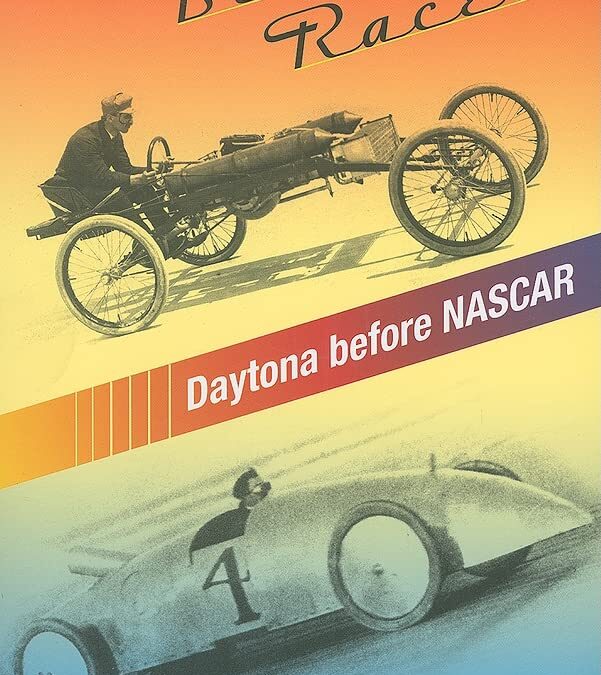
Every spring, hordes of fans descend upon Florida for the Daytona 500, the famed first race in the NASCAR season. But how many know that racers have been bringing fast cars to the beach for more than one hundred years? Beach Racers portrays the thrills and dangers of the first automobile races in Daytona. In an era of poor roads, the flat, wide sands of Ormond and Daytona beaches proved to be the ideal venue for engineers and drivers pushing the technological envelope, looking for ways to make their cars go ever faster. For nearly a decade (1903-1910) land speed records were routinely set and broken by automakers such as Mercedes, Winton, Napier, Darracq, and Stanley Steamer thanks in part to financing from such business tycoons as Stanley brothers and Vanderbilt. Dick Punnett has scoured libraries, auto museums, and historical societies throughout Florida, the Northeast, and the Midwest to track down stunning photographs and primary sources to learn what really happened during these early races. Filled with riveting photographs, fascinating anecdotes, and authoritative lists of winners, contestants, and record-setters, Beach Racers is a must-have for every true fan of NASCAR.

“..every now and again the video market throws up a genuine classic – one to be treasured and watched again and again. Such an offering is the latest DVD issued by bikesport specialists Duke entitled Great Italian GP Racers…for those who lived through it, it is a magnificent reconstruction of what many still see as the true golden age of the sport – the 50s, 60s and early 70s. This was a time when the world’s first superbikes, exotic and complex multi-cylindered handbuilt machines from Italy, emerged to do titanic battle with the last competitive offerings from British factories and the embryonic challengers from the Orient.. Archive film and new interviews are superbly married together to give the modern viewer a marvellous overview of the Italian phenomenon. Revel in the sights and sounds of Guzzis, Gileras, Benellis and MVs battling first with Nortons and Ajays and later with Hondas and Yamahas. Thrill to the skills, not only of Italian-born stars like Agostini and Pasollini, but also of the ‘foreign legion’ of British and Antipodean riders recruited by the Italian factories as their machines eclipsed the best of British. Among others, Duke, Surtees and Read all give their first hand recollections of riding the Italian jobs, all illustrated by moving pictures to treasure – including several minutes of blood-stirring action on the original Nurburgring, and film of many stars of yesterday who are no longer with us. Add to this the reminiscences of the men who created the machines, the factory owners and engineers and you have a stunning package of sight and sound.. exceptional value for money… it’s a real must for enthusiasts of this era, old or new.” EVENING GAZETTE
The Gee Bee Racers:A Legacy
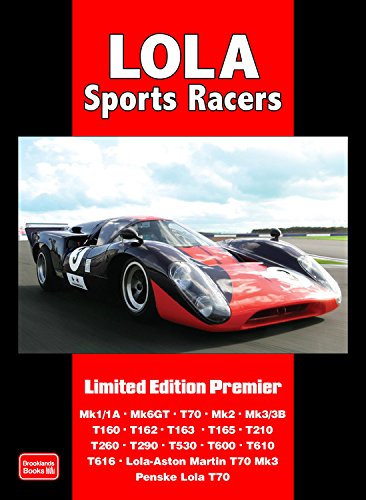
The Lola story began in 1957 when civil engineer Eric Broadley built a Ford Special. The series of legendary sports racing cars that followed is charted in this portfolio using model introductions, track & road test articles, technical and performance data. Models reported on are the Mk 1, 1A, Mk 6 GT, T70, T160, T162, T163, T165, T210, T260, T290, T530, T600, T610, T616, Lola-Aston Martin & Penske Lola. A total of 160 fully illustrated pages.
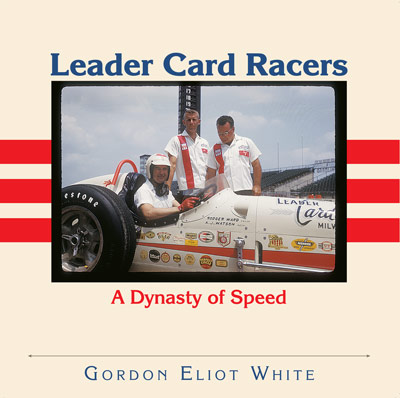
The remarkable story of one family’s four-generation passion for auto racing. Beginning with a team of midgets before WW II, successful paper manufacturer Bob Wilke, his son Ralph, and now his Grandsons have owned and sponsored winning racing cars on the Championship trail, on dirt track, and currently with a successful return to midgets. Superbly chronicled by noted author Gordon White, the story of Leader Card Racers is a testament to the Wilke family’s devotion to motor sport and to the history of American oval track racing.
Grand Prix Motorcycle Racers
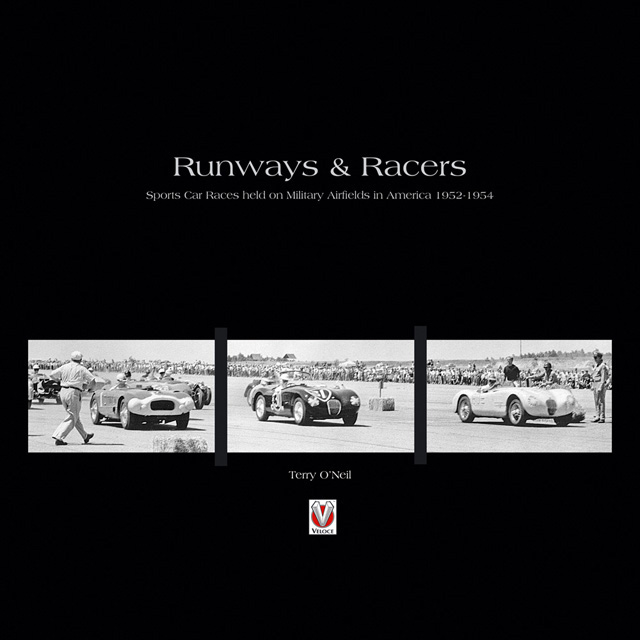
Runways and Racers focuses on the various aspects that contributed to sports car races being held at military installations throughout America in the early 1950s. It was a marriage of convenience for the Sports Car Club of America and the Strategic Air Command, with both parties gaining advantages from the arrangement as well as providing contributions towards it. The thorn in the side turned out to be a Congressman whose own aspirations exceeded his standing, but who found himself in a position to be able to influence the outcome of events.

















